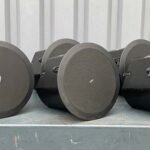The Smith & Wesson Model 13, also known as the Military & Police Magnum, is a distinguished revolver that has played a significant role in law enforcement history. Introduced in 1974, this .357 Magnum revolver was designed to meet the rigorous demands of police and military personnel.
Explore the history, design, and legacy of the Smith & Wesson Model 13, a .357 Magnum revolver renowned for its reliability and use in law enforcement.
Design And Features
The Model 13 is built on Smith & Wesson’s K-frame, offering a balance between durability and manageable size. It features a six-round cylinder and was available with either a 3-inch or 4-inch heavy barrel. The revolver is equipped with fixed sights, providing a streamlined profile suitable for quick draw and ease of use. Its blued steel finish gives it a classic appearance, while the Model 65 variant offers a stainless steel option for enhanced corrosion resistance.
Historical Significance
The inception of the Model 13 was influenced by the New York State Police’s need for a robust .357 Magnum service revolver to replace their existing .38 Special firearms. This led to the development of the Model 13, which combined the heavy barrel of the Model 10 with the power of the .357 Magnum cartridge. The Federal Bureau of Investigation (FBI) also adopted the Model 13, issuing a 3-inch barrel version with a round butt to its agents. This model holds the distinction of being the last revolver officially issued by the FBI before transitioning to semi-automatic pistols.
Variants and Production Changes
Throughout its production run from 1974 to 1999, the Model 13 underwent several engineering modifications:
-
Model 13-1 (1974): Introduction with model number stamping.
-
Model 13-2 (1977): Modification of the gas ring from yoke to cylinder.
-
Model 13-3 (1982): Elimination of the cylinder counterbore and pinned barrel; a slight change in cylinder length to 1.62 inches.
-
Model 13-4 (1988): Implementation of a new yoke retention system, radius stud package, floating hand, and hammer nose bushing.
These changes reflect Smith & Wesson’s commitment to improving the revolver’s performance and manufacturing efficiency over time.
Legacy
The Smith & Wesson Model 13 is celebrated for its reliability, straightforward design, and historical importance in law enforcement. Its balance of power and size made it a preferred choice for many agencies during its time. Today, it remains a sought-after piece among collectors and firearms enthusiasts who appreciate its role in the evolution of service revolvers.
Frequently Asked Questions
-
What is the Smith & Wesson Model 13?
The Model 13 is a .357 Magnum revolver introduced by Smith & Wesson in 1974, designed primarily for law enforcement and military use.
-
What are the key features of the Model 13?
It features a K-frame design, a six-round cylinder, a 3-inch or 4-inch heavy barrel, fixed sights, and a blued steel finish.
-
Which law enforcement agencies used the Model 13?
Notably, the New York State Police and the FBI adopted the Model 13 for their officers and agents.
-
What is the difference between the Model 13 and Model 65?
The primary difference is the finish; the Model 13 has a blued steel finish, while the Model 65 is the stainless steel variant.
-
Is the Smith & Wesson Model 13 still in production?
No, production of the Model 13 ceased in 1999, but it remains popular among collectors and enthusiasts.










